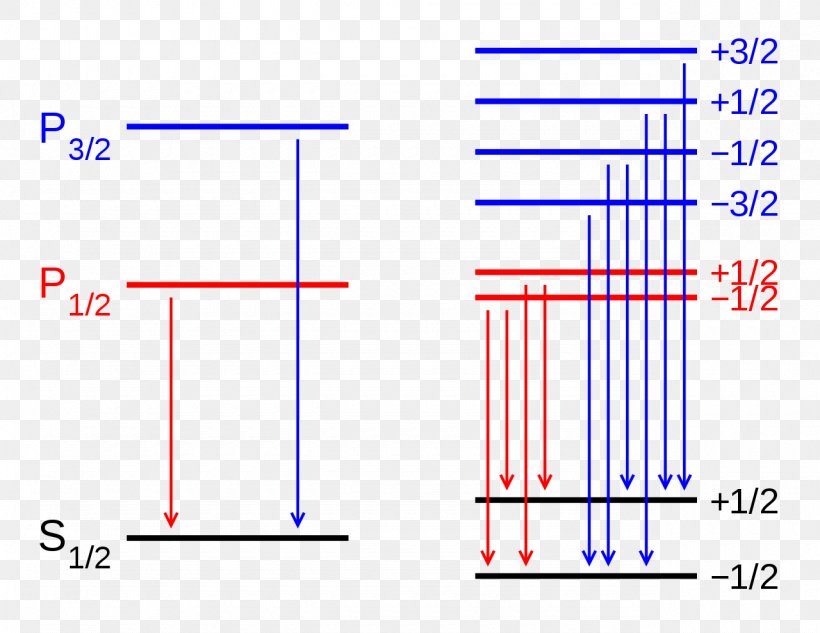In the realms of physics, juxtaposing macroscopic and microscopic phenomena often reveals unexpected interconnections. One intriguing representation of this idea arises when one considers the capacity of fluid dynamics to echo quantum mechanical principles, most notably the Zeeman effect. This phenomenon, traditionally confined to the microscopic theater of atomic structures, finds an unlikely analogue in fluid systems, particularly as observed in the behavior of droplets under external influences.
The Zeeman effect, discovered by Pieter Zeeman in 1896, describes the splitting of spectral lines of atoms when subjected to a magnetic field. As electrons transition between energy levels, the presence of an external magnetic field alters these levels, effectively ‘splitting’ previously degenerate states. This splitting manifests in the form of multiple spectral lines, a tantalizing dance of energy states elicited by the subtle pull of magnetism. The resonance of this effect resonates even within the fluid dynamics sphere, particularly as droplets interact with surfaces and each other under varying environmental conditions. Through these interactions, droplets exhibit complex behavior reminiscent of particle physics, thus inviting a discussion on how classical systems might mirror quantum phenomena.
The analogy emerges most vividly when considering the interplay of forces acting upon liquid droplets. The droplet can be thought of as a miniature universe, a microcosm where gravity, surface tension, and external perturbations orchestrate a symphony of movement. Each droplet, akin to an atom, is subject to forces that dictate its shape and stability, analogous to how an electron’s energy state is conditioned by its magnetic environment. The droplet’s response to variations in temperature, pressure, and other environmental factors can result in phenomena such as coalescence, fission, or oscillation.
Within this framework, one can explore the dynamics of droplet clusters, where individual droplets interact with one another. As droplets merge, the resultant larger droplet can be thought to exhibit a form of ‘energy state’ aggregation akin to electron states resulting from magnetic influence. In this sense, the behavior of droplets under specific conditions mirrors the spectral line splitting as influenced by magnetic fields. Each configuration of droplets can yield quantum-like behavior, suggesting that the droplet’s dynamics can reflect more nuanced interactions of quantum particles.
Furthermore, the existence of resonant frequencies within droplet systems parallels the quantum world where energy levels are defined sharply. When droplets collide, they can resonate at specific frequencies, leading to predictable behaviors that are reminiscent of quantum states defined by the Zeeman effect. The concept of droplet fission, where a droplet divides into smaller droplets upon hitting a surface or another droplet, provides an elegant metaphor for the quantum leaps in energy states that electrons undertake when subjected to an external magnetic field.
The application of external forces, such as electric fields, can further deepen the comparison. When droplets are placed within an electric field, they deform, aligning their internal structure according to the field’s gradient. This phenomenon can be likened to the Zeeman effect: external influences can modify energy states and physical characteristics. The deformation of droplets in such fields alters their stability, size, and interaction dynamics, offering an experimental lens through which we can view the interplay of forces that shape their existence. Such transformations are not merely academic; they have practical implications in fields ranging from materials science to biotechnology.
The metaphoric bridge between droplets and quantum mechanics is rich with implications, particularly within the scope of emergent phenomena. Just as group behaviors in quantum systems lead to the emergence of macroscopic quantum states—such as Bose-Einstein condensates—the interaction of multiple droplets can give rise to unexpected collective behaviors. These behaviors might manifest as organized oscillations, complex patterns in droplet dynamics, or even altered material properties when subjected to external perturbations.
The field of soft matter physics significantly benefits from these insights, as understanding droplet dynamics aids in elucidating larger principles governing complex fluids. Researchers can leverage these quantum-like behaviors to innovate in material design, creating substances that exhibit tailored properties driven by their microstructural arrangement. The parallels drawn between droplets and quantum particles can inspire novel approaches to phase transitions and stability conditions influencing diverse applications—from emulsions in food science to pharmaceuticals.
Challenges remain in fully articulating the interplay between droplets and quantum phenomena. Empirical methods to observe and measure droplet behavior in controlled environments are paramount to advancing this discourse. Recent developments in imaging technology, such as high-speed cameras and advanced computational simulations, enhance our capacity to analyze droplet interactions in real-time, revealing intricate dynamics that might otherwise go unnoticed.
In conclusion, the exploration of droplet dynamics as a metaphor for the Zeeman effect emphasizes the interconnectedness of diverse physical phenomena. While seemingly disparate, the behaviors of microscopic and macroscopic systems converge, providing a fertile ground for interdisciplinary inquiry. As researchers continue to investigate these analogies, the rich tapestry woven from fluid mechanics and quantum physics challenges conventional boundaries, inviting a deeper understanding of the universe’s fundamental fabric.












